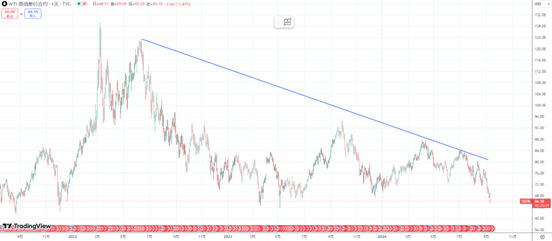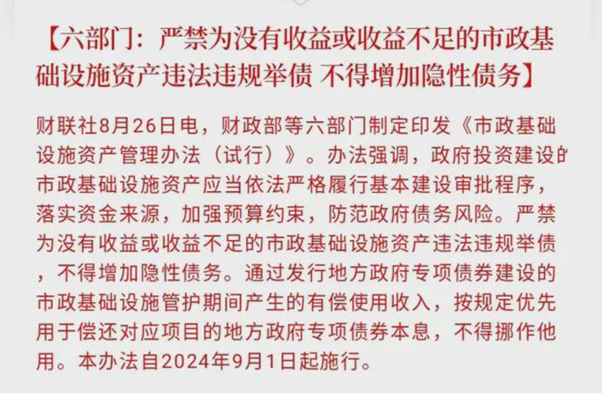市场资讯及洞察

Multi-Timeframe (MTF) analysis is not just about checking the trend on the daily before trading on the hourly; ideally, it involves examining and aligning context, structure, and timing so that every trade is placed with purpose.
When done correctly, MTF analysis can filter market noise, may help with timing of entry, and assist you in trading with the trending “tide,” not against it.
Why Multi-Timeframe Analysis Matters
Every setup exists within a larger market story, and that story may often define the probability of a successful trade outcome.
Single-timeframe trading leads to the trading equivalent of tunnel vision, where the series of candles in front of you dominate your thinking, even though the broader trend might be shifting.
The most common reason traders may struggle is a false confidence based on a belief they are applying MTF analysis, but in truth, it’s often an ad-hoc, glance, not a structured process.
When signals conflict, doubt creeps in, and traders hesitate, entering too late or exiting too early.
A systematic MTF process restores clarity, allowing you to execute with more conviction and consistency, potentially offering improved trading outcomes and providing some objective evidence as to how well your system is working.
Building Your Timeframe Hierarchy
Like many effective trading approaches, the foundation of a good MTF framework lies in simplicity. The more complex an approach, the less likely it is to be followed fully and the more likely it may impede a potential opportunity.
Three timeframes are usually enough to capture the full picture without cluttering up your chart’s technical picture with enough information to avoid potential contradiction in action.
Each timeframe tells a different part of the story — you want the whole book, not just a single chapter.

Scalpers might work on H1-M15-M5, while longer-term traders might prefer H4-H1-H15.
The key is consistency in approach to build a critical mass of trades that can provide evidence for evaluation.
When all three timeframes align, the probability of at least an initial move in your desired direction may increase.
An MTF breakout will attract traders whose preference for primary timeframe may be M15 AND hourly, AND 4-hourly, so increasing potential momentum in the move simply because more traders are looking at the same breakout than if it occurred on a single timeframe only.
Applying MTF Analysis
A robust system is built on clear, unambiguous statements within your trading plan.
Ideally, you should define what each timeframe contributes to your decision-making process:
- Trend confirmed
- Structure validated
- Entry trigger aligned
- Risk parameters clear
When you enter on a lower timeframe, you are gaining some conviction from the higher one. Use the lower timeframe for fine-tuning and risk control, but if the higher timeframe flips direction, your bias must flip too.
Your original trading idea can be questioned and a decision made accordingly as to whether it is a good decision to stay in the trade or, as a minimum action, trail a stop loss to lock in any gains made to date.
Putting MTF into Action
So, if the goal is to embed MTF logic into your trade decisions, some step-by-step guidance may be useful on how to make this happen
1. Define Your Timeframe Stack
Decide which three timeframes form your trading style-aligned approach.
The key here is that as a starting point, you must “plant your flag” in one set, stick to it and measure to see how well or otherwise it works.
Through doing this, you can refine based on evidence in the future.
One tip I have heard some traders suggest is that the middle timeframe should be at least two times your primary timeframe, and the slowest timeframe at least four times.
2. Build and Use a Checklist
Codify your MTF logic into a repeatable routine of questions to ask, particularly in the early stages of implementing this as you develop your new habit.
Your checklist might include:
- Is the higher-timeframe trend aligned?
- Is the structure supportive?
- Do I have a valid trigger?
- Is risk clearly defined?
This turns MTF from a concept into a practical set of steps that are clear and easy to action.
3. Consider Integrating MTF Into Open Trade Management
MTF isn’t just for entries; it can also be used as part of your exit decision-making.
If your higher timeframe begins showing early signs of reversal, that’s a prompt to exit altogether, scale out through a partial close or tighten stops.
By managing trades through the same multi-timeframe approach that you used to enter, you maintain logical consistency across the entire lifecycle of the trade.
Final Action
Start small. Choose one instrument, one timeframe set, and one strategy to apply it to.
Observe the clarity it adds to your decisions and outcomes. Once you see a positive impact, you have evidence that it may be worth rolling out across other trading strategies you use in your portfolio.
Final Thought
Multi-Timeframe Analysis is not a trading strategy on its own. It is a worthwhile consideration in ALL strategies.
It offers a wider lens through which you see the market’s true structure and potential strength of conviction.
Through aligning context, structure, and execution, you move from chasing an individual group of candles to trading with a more robust support for a decision.


Mays FOMC minutes released on Wednesday surprised on the hawkish side, bolstering USD and seeing the Dollar Index (DXY) retake the psychological 105 level. While the general view of FOMC members was that policy was “well positioned”, there were a few more than expected who were open to more hikes if needed, questioning whether policy was restrictive enough. Hot March inflation and jobs figures seemingly lingering in the minds of some of the kore hawkish members of the FOMC despite some encouraging April data.
Hawks Neel Kashkari and Chris Waller being the main voices regarding caution from the Fed in cutting too early, though it does seem that the general FOMC sentiment has turned generally less hawkish since the May meeting so any pop in the USD may be short lived. In today’s economic releases for FX traders PMIs are released in the US and eurozone. Given indications from recent data, there is the possibility for eurozone figures to paint a relatively more encouraging picture on inflation than in the US, also Nvidia’s solid results will likely have some positive impact on risk sentiment today.


Where’s the Federal Reserve at? Slowing Growth and Potential Rate Cuts: Recent economic data suggests a slowdown in growth, contrary to earlier expectations of reaccelerating growth and inflation. Federal Reserve Chairman Jerome Powell's statements and recent economic indicators point towards the possibility of lower policy rates in the near future.
Key indicators, such as the softening in job markets and overall economic activity, indicate that growth is decelerating rather than accelerating. Core inflation remains above the Fed's target but is showing signs of a gradual decline, with core CPI at 0.29% month-over-month (MoM) in April. This trend could build the Fed's confidence that inflation is on a downward trajectory, potentially leading to rate cuts starting in July.
These data trends have filtered into in the market itself. The divergence between the S&P and US 2-year has been come very apparent as yields unwind from their hawkish bets that ramped up on Q1 data. That spread is becoming an interesting trade – it could close as fast as it has opened if data misses.
On the data – what is core to the Fed’s view? Inflation Trends: Core inflation remains elevated but shows signs of slowing. The April core CPI increase of 0.29% MoM aligns with the Fed's expectations of gradual inflation decline.
The slow but steady decrease in shelter prices, particularly the owner’s equivalent rent (OER), is a positive sign. However, the "supercore" non-shelter services sector's inflation is unlikely to slow significantly without a loosening of the labour market and that remains a headwind. That brings us to the next question what is the official views of the Fed?
Federal Reserve Outlook: The recent Federal Open Market Committee (FOMC) minutes and statements from Fed officials suggest it still holds a cautious approach. While there is no major shift towards a hawkish stance, the rhetoric indicates a readiness to cut rates if inflation data supports a premise it’s on a path to a more sustainable level. Yet the view from members is rather mixed, illustrated by the mixed views from members over the past week.
Key Statements Vice Chair Philip Jefferson: Jefferson noted that while April's data is encouraging, it is too early to determine if the slowdown in inflation is sustainable. He emphasized the current restrictive monetary policy and refrained from predicting when rate cuts might begin, stressing the importance of assessing incoming economic data and the balance of risks. Vice Chair of Supervision Michael Barr: Barr expressed disappointment with Q1 inflation readings, which did not increase his confidence in easing monetary policy.
He reinforced the message that rate cuts are on hold until there's clear evidence that inflation will return to the 2% target. Cleveland Fed President Loretta Mester: Mester anticipates a gradual decline in inflation this year but acknowledges that it will be slower than expected. She no longer expects three rate cuts this year and mentioned that the Fed is prepared to hold rates steady or raise them if inflation does not improve as anticipated.
San Francisco Fed President Mary Daly: Daly sees no need for rate hikes but also lacks confidence that inflation is decreasing towards 2%. She sees no urgency to cut rates, echoing the broader sentiment of caution among Fed officials. The conclusion from all this is that the Fed is still giving itself time.
It’s of the view that the restrictive policy will need more time to work, suggesting a prolonged period of higher interest rates to combat inflation effectively and despite the movements in the bond market and USD. Traders in the fed fund futures are still trading a full 50 basis points higher as of now compared to their bets at the March meeting. (Black v Blue line) Other data that matters: GDP and Consumer Spending: Despite strong GDP growth in the latter half of 2023, real GDP growth slowed significantly to 1.6% annualized in Q1 2024. Final private domestic demand was sustained primarily by consumer services spending, even as real goods spending declined.
The weakening consumer spending on goods is beginning to spill over into the services sector, indicating broader consumer weakness. Manufacturing and Investment: Data on manufacturing and business investment remains weak. Manufacturing production has stagnated, and orders for durable goods have not shown significant improvement.
Residential fixed investment is also slowing, with housing starts and building permits both declining in April. Housing Market: Existing home sales data, to be released soon, is expected to show a modest rebound from the previous month. However, ongoing weakness in the housing market, influenced by higher mortgage rates, remains a concern.
Hot Copper – Too hot? Copper has experienced significant price movements, with several key factors contributing to the recent trends in copper prices, spreads, and inventory levels. The following points provide an in-depth analysis of the forces at play: Tighter Physical Copper Market: Last week's record highs in COMEX and SHFE copper prices, alongside the COMEX-LME copper spreads indicate a very tight physical copper market.
This saw the LME copper price smash a new record all-time high (above US$11,000 a tonne). The dislocation in copper price benchmarks, such as the COMEX-LME spread, typically leads to adjustments in physical flows. However, current conditions are proving challenging, with generally low copper inventories and logistical issues.
For example, traders in China are facing tight shipping schedules, making it difficult to move copper to the US. Suggesting the price will hold in the interim De-commoditisation of Commodities: Deliverable Metal Scarcity: The elevated COMEX copper prices relative to other benchmarks can be partly attributed to the lack of deliverable metal. Only 17% of the metal in LME warehouses originates from countries with COMEX-approved brands.
This scarcity of deliverable inventory means that most of the available copper cannot be used to satisfy COMEX contracts, driving up the COMEX copper premium. RIO, BHP and the like all benefit from this. Influence of Financial Flows: Naturally this kind of move brings highten investor and trader interest.
COMEX copper futures are experiencing all-time highs in long positioning and record open interest in copper options. This surge in financial flows has pushed COMEX copper prices higher compared to other benchmarks and has been more resistant to reversal. What next?
The tight inventory situation is likely to persist, especially if logistical challenges and shipping delays continue. This will maintain upward pressure on prices and could lead to further dislocations between different copper price benchmarks. Efforts to alleviate bottlenecks will be crucial in normalizing price spreads and stabilizing the market.
Any improvement in shipping schedules or inventory replenishment could ease some of the current tensions, but we do not hold our breathe for this to occur any time soon. Conclusion The recent record highs in copper prices and spreads underscore a complex interplay of tight physical markets, and significant financial flows. Traders should closely monitor these dynamics and adapt their positions to capitalise on potential switches and further squeezes.
But in the main Dr. Copper is hot and likely to remain so until supply catches up.


热门话题
9月8日,中国方面正式发文允许外商在部分地区以独资设立医院。政策原文是这样的:“……拟允许在北京、天津、上海、南京、苏州、福州、广州、深圳和海南全岛设立外商独资医院(中医类除外,不含并购公立医院)。设立外商独资医院的具体条件、要求和程序等将另行通知。” 该政策还允许外商投资企业在北京、上海、广东的自由贸易试验区和海南自贸港从事人类干细胞和基金的诊断开发和技术应用,以用于产品注册上市和生产。

允许外商独资建医院是中国三明医改的配套措施,这其实不是什么新鲜事。过去十年,中国对于外商参与医疗行业的态度是慎之又慎,政策也是反复横跳,今年再次放开,我们且看且珍惜。2014年中国允许7城设立外商独资医院,但是2015年医疗机构被列入限制类清单,2017年明确了外资只能通过合资或合作方式参与投资设立医疗机构,2023年又提出支持外籍和港澳台医生在北京开诊所病并提供职称支持。在中国,大部分外国投资者只能与中资合作做生意,独资审批的条条框框劝退了很多国际直投资金。今年1-7月外资直接投资同比下降近30%到5395亿元人民币(约761亿美元)。前段时间,IBM关掉了设立在中国的研发部门,很多人认为外资逃离中国了,其实可能要分行业、分版块来看。充分竞争的行业例如日化、快消品,外资乐于进入中国,压根没有想走的意思,代表标的:可口可乐、百事可乐、嘉士伯、宝洁等等;高科技产业,外资可能是阶段性进入,打一波时间差,等中国行业被带动起来以后,没办法赚快钱就战略性退出,代表标的惠普、戴尔、IBM、Oracle。中国通过引进独资的苹果与特斯拉, 让其手机产业、电动汽车产业和智能驾驶产业实现了巨大飞跃,本次开放引进外商独资医院,可能也是追求这种“鲇鱼效应“。本次外商独资放开可能带来的未来趋势,第一是医院分级诊疗越来越明显。普通老百姓看普通病症,中国的公立医院性价比高、是首选;追求高质量服务、需要高端医疗、罹患疑难杂症的人群,可以选择前往外商私立医院,不报医保,自掏腰包,但是治病的可选范围和疗愈几率都大了不少。第二,国际创新药的高价模式和应用场景在中国可能有了承接渠道。国际创新药研发巨头的管线被证伪几率非常小,药品研发团队和资金链也相对完善,而中国对于肿瘤治疗、再生医学例如干细胞医学,中风康复治疗等国际创新药的需求比较大,当然这类药品在中国国内的上市销售还需要看后续的配套细则。下面介绍以下4个全球100亿美元市值以上的医疗板块标的,供您参考:Johnson & Johnson(NYSE: JNJ)主要业务涵盖医疗设备、制药和消费品。旗下的医疗设备部门生产手术系统、心血管设备等。中国对高质量医疗设备需求巨大,尤其是在手术和心血管领域。现有的全球布局使其在中国市场具备竞争优势。强生公司是美股医疗板块的蓝筹股,公司毛利率长期保持在60%-70% 之间,净利润率通常在20% 左右,股息派发历史超过50 年,是可靠的股息贵族,2023年年化股息率约为2.5% 至 3% 左右。

Thermo Fisher Scientific Inc(NYSE: TMO)全球市值最大的生命科学和实验室设备供应商之一,主要提供科学仪器、试剂和耗材,广泛应用于医疗和科研领域。2019年公司在中国苏州设立了全球最大的生产基地之一,用于制造实验室设备和诊断试剂,又与中国医学科学院等机构合作,帮助推动基因组学、癌症研究和精准医疗的发展。公司得力于新冠期间对医疗设备和试剂需求,2020年股价增长60%,2021年股价全年增长90%。Intuitive Surgical, Inc.(NAS: ISRG)公司核心产品达芬奇(da Vinci)机器人手术系统在中国的应用起步较早,主要集中在一线城市和一些二线城市的大型医院。一些顶级心脏病医院已经开始引入达芬奇系统进行心脏瓣膜修复和肿瘤切除手术。过去三年每股收益增长19%,属于2024年以来上涨比较强势的医疗板块公司。HCA Healthcare Inc(NYSE:HCA)HCA全球最大的私营医院运营商之一,成立于1968年,总部位于美国,当前管理全球400多家医院,可以提供高端完善的医院、急诊室、诊所、外科中心等多种医疗服务及配套设置。自2019年1月以来,公司股价上涨214.43%,过去60 天内,10 位分析师上调了 2024 财年的盈利预期,公司本财年盈利预期上涨17.6%,每股收益预计上涨9%,可能是比较好的可以抵御和对冲九月效应的医疗标的。免责声明:GO Markets 分析师或外部发言人提供的信息基于其独立分析或个人经验。所表达的观点或交易风格仅代表其个人;并不代表 GO Markets 的观点或立场联系方式:墨尔本 03 8658 0603悉尼 02 9188 0418中国地区(中文) 400 120 8537中国地区(英文) +248 4 671 903作者:
Christine Li | GO Markets 墨尔本中文部


热门话题
布伦特原油期货自 2021 年 12 月以来首次跌破 70 美元,咱们去加油也开始出现160的价格了,相比之前一直200+,每月油钱至少能相当于少支出2顿大餐。最近石油为什么一直跌跌不休呢?主要还是供求关系变化了。石油输出国组织(OPEC)周二在月度报告中表示,2024年世界石油需求将增加203万桶/日,低于上个月预测的211万桶/日的增长。还将2025年全球石油需求增长预期从178万桶/日下调至174万桶/日。意味着未来石油国际需求量降低。

需求降低,供给不变的情况下,商品价格自然要下跌。另外,石油属于周期性经济,以中国的需求为例,目前的财政政策和房地产周期(各地市纷纷下跌,我们也在2年前就开始告诉大家这个情况会发生),没有办法消耗更多的原油,国内需求导致原油进口量今年迄今下降超过3%,也给全球石油市场带来压力。预计 2023 年至 2025 年期间每年将下降 1.1%,并且随后几年降幅将加速(新能源电动车的普及)。电动汽车的普及率已经超过了政府的目标,今年电动汽车的销量将达到新车销量的 40%,预计销量将达到 1220 万辆,比 2023 年增长 29%。另外,由于柴油和汽油供应增加,上周亚洲炼油商的利润率跌至2020 年以来的季节性最低水平。在全球经济和社会向绿色低碳方向发展的背景下,石油产品的需求预计将在2025年至2030年期间每年平均下降2.7%,而在2030年至2035年期间,这一下降速度将加快至每年3.2%。石油市场的未来看起来并不乐观,尤其是在电动汽车和其他清洁能源车辆迅速普及的情况下。

中国作为全球能源转型的先锋,液化天然气(LNG)动力卡车数量迅速增加。到今年6月,LNG卡车的数量已经达到了73万辆,预计到年底将增长至85万辆。到2024年,这些LNG动力卡车将替代每日28万桶的柴油消耗。目前,液化天然气卡车已经占到了中国新卡车销量的33%。在一些能源生产大省,如山西和宁夏,这一比例更是高达50%,展示了清洁能源在中国运输行业的广泛应用。而目前比较有压力的点在于,美国石油工业继续生产接近创纪录的石油产量,增加了全球供应。如果不开始减产,到 2025 年,石油价格可能跌至每桶 60 美元。而几家大型石油商,埃克森美孚、壳牌和雪佛龙关闭了墨西哥湾的石油平台,但生产中断未能推高原油价格。压力最大的国家,是俄罗斯。原油收入降至 2 月份以来的最低水平,对其在乌克兰战争上的财务投入起到负面影响,毕竟打仗,要粮草先行,打的是一个国家的财政。Woodside Energy Group Ltd (ASX: WDS) 股价连续创出近期新低,对中长线投资者来说是一件好事情。因为战略物资很难有长周期的价格低迷,快速下跌后往往伴随反弹。但是,石油价格还是要看供求关系,取决于国际经济环境,以及俄罗斯被制裁的程度。

总结来说,原油价格和以下因素有关:1. 供需关系:2020年新冠疫情爆发后,全球经济活动大幅减少,石油需求急剧下降,导致油价一度暴跌。与此同时,主要产油国并没有及时减产,进一步加剧了供需失衡。2. 地缘政治:2022年俄罗斯和乌克兰冲突爆发,西方国家对俄罗斯实施制裁,影响了全球石油供应链,导致油价飙升。3. OPEC政策:2016年,OPEC和其他产油国达成减产协议,成功推动了全球油价从长期低迷中回升。4. 清洁能源:全球电动车销量大幅增长,削弱了石油市场的需求。5. 技术进步:技术的进步能够提高石油的开采效率或降低开采成本。因此,从长期看,石油价格还有上涨的可能性,但是维持一个相对低位的震荡区间,我认为会更合理,毕竟经济规律的周期对石油的影响是增加供给,减少需求。免责声明:GO Markets 分析师或外部发言人提供的信息基于其独立分析或个人经验。所表达的观点或交易风格仅代表其个人;并不代表 GO Markets 的观点或立场联系方式:墨尔本 03 8658 0603悉尼 02 9188 0418中国地区(中文) 400 120 8537中国地区(英文) +248 4 671 903作者:
Jacky Wang | GO Markets 亚洲投研部主管


热门话题
众所周知,从80年代中国正式开始加速城市化进程以后,中国的经济增长就伴随着大量资源的需求增加。从用电量,到钢铁产量,从煤炭消耗,到石油进口。在过去40年的城镇化进程里,大量与能源和资源相关的产业都因为中国经济的增长而从中获利。澳洲,作为最大的铁矿石出口国,同样也享受了过去40年的出口增长。而随着中国的经济发展,其出口到澳洲的产品也从30年前的打火机袜子,到20年前的玩具小家电,再到10年前的手机,大家电,以及最近几年的电动车和汽车。中澳的关系已经不仅仅是单方面的进口或出口。双方都从对方进口自己需要的商品,以及出口对方需要的产品。双方的经济也在经济互补中互惠互利。

澳大利亚位居中国第六大贸易伙伴之列;同时,澳大利亚是中国第五大进口来源国和第十大出口市场。但是双方在经济上的紧密关系,也因为疫情后的一系列事件而降到冰点。双方的经贸也因为外交关系而经历巨大的下滑。在一系列非必要商品,例如红酒,龙虾,牛肉和农产品上,中国都对澳洲加以关税或其他限制。这样的局面一直到2022年工党政府执政后才得到了逐步的缓解。尤其是在2024年,中方的总理也在7年后再次访问澳洲,使得双方关系进一步得到巩固。但是既然关系现在都不错,为何澳洲的财长还要在9月访问中国呢?其实还不是因为关键出口商品的下降。大家猜猜是啥呢?随着中澳关系的缓和,澳洲的大麦、棉花、燕麦草和木材的出口额在过去一年多里已经增长了30多亿澳元。然后在今年3月份中国再次取消了葡萄酒限制,一个月内,澳洲葡萄酒商向中国出口了价值8600万澳元的葡萄酒。但是,but,这些金额对比另一个关键性产品还是太少了。那个产品就叫做:铁矿石。

2023年,澳洲一共出口了大约1361亿澳元的铁矿石,而中国占据其出口总量的85%。也就是1157亿澳元左右。而其他几乎所有农产品和红酒的新增量,都不及1157的末尾两个零头。而随着今年年初开始,铁矿石到目前已经下跌了40%以上,一个月前我的文章里说到澳元不会上涨时,当时铁矿石刚跌破100美元,如今已经跌破90美元。作为生活在澳洲的老百姓,我本人其实也不希望看到这个情况,毕竟澳洲出口减少,也意味着澳洲经济情况恶化。但是我不得不再次承认,目前我依然不觉得中国的房地产会马上反弹。实际上中国发改委最近出台了一个明确的文件,就是要求地方不得对于一些没有回报的项目盲目借债上马。

这意味着,原本钢铁企业所希望的通过大规模基建来替代房地产对于钢材的需求再次落空。这也意味着,在未来很长一段时间内,并不会有另一个产业可以大规模的替代因为房地产需求萎缩而导致的钢材过剩的局面。而钢材过剩,自然就意味着对于铁矿石需求的减少。但是这些减少,可以通过澳洲财长访问中国而改变吗?当然不可能。那澳洲财长去中国,为了啥?我们来看看官方通告,澳洲财长在公开讲话中提到,他计划于9月最后一周在北京与发改委高级官员会晤,进行战略经济对话,讨论贸易限制、外国投资规则以及关键矿产等敏感领域。那中国不是已经取消了所有澳洲商品限制了吗?其实还有一些没有取消,比如龙虾。当然,这依然只是铁矿石总量的杯水车薪。那么,我们来猜猜,财长可以用什么办法来说服中国继续大量购买铁矿石呢?我自知愚笨,我只能想到一个办法,就是:必须拿足够诚意和砝码去交换,那有什么砝码可以让中国钢铁企业再次增加购买澳洲产品呢?我可以想到的就是:减少或取消针对中资企业收购澳洲矿业资产的限制。如果大家还有记忆的话,时间回到2010年,当时中国对于澳洲的矿业资产和上市公司的投资是很多的,包括必和必拓和力拓都有中国的投资。但是时过境迁,如今澳洲上市的矿业企业里,中资占有的比例或者新增比例已经微乎其微。

所以我的猜测是,中国方面会希望要求澳洲放款中国企业投资澳洲矿业和上市企业的限制,来换的对于澳洲其他商品同样的限制解除,以及某些对于澳洲铁矿石的优惠政策。毕竟,当煤老板家也出现余粮不够的情况时,那大客户的订单就显得尤为重要了。免责声明:GO Markets 分析师或外部发言人提供的信息基于其独立分析或个人经验。所表达的观点或交易风格仅代表其个人;并不代表 GO Markets 的观点或立场联系方式:墨尔本 03 8658 0603悉尼 02 9188 0418中国地区(中文) 400 120 8537中国地区(英文) +248 4 671 903作者:
Mike Huang | GO Markets 销售总监


热门话题
非农周一改上半年的助涨规律,继八月份以来,连续第二次非农周股市大幅回撤。9月首周三大股指均大幅下跌,标普和纳指单周跌幅创下今年之最,技术面均走破位。9月“魔咒”经过一周行情验证,的确来势汹汹。刚刚公布的非农数据小于预期16万增幅,仅14.2万增量。主要还是目前非农次次下修,水分极大,因此这样的数据不得人心。从上个月非农11.4万修正后变成8.9万不足十万的数据,就可以看出目前问题的严峻性,鲍威尔担心当前就业数据不是空穴来风。之前公布的2023年3月至2024年3月非农下修80万数据,更从较长时间跨度证明了美国目前的首要问题已经从通胀转向了就业。目前美国最新失业率为4.2%,回落0.1%看起来并不差,平均时薪年率增幅3.8%也有较前值回暖的迹象。因此周五综合数据出炉当时股市并没直接暴跌,比较隐晦的非农数据没有直接给市场一个明确的利空,但没有任何的助推帮助是显而易见的。直到美股正盘开盘后,股指才结合9月不良投资情绪叠加稳步下行,直到收盘也没有丝毫反弹止跌迹象,令市场消极情绪的作用对股市形成了蝴蝶效应,刚刚过去一波的大恐慌才平息没几天就又有大涨的势头了。

新的一周美国最新CPI数据即将公布,而本次预测值将通胀定为2.6%,较前值2.9%有很大的下落,若能符合预期,那么美联储可以安心专注于就业稳定,因为这样的通胀回落速度显示了稳定的控通胀效果,美联储也没必要着急在本月降息50个基点,降息25个基点基本就是板上钉钉。然而通胀回落至2.6%增幅或许也只能够短暂压制住股指不继续暴跌,因为市场目前关注点不再是通胀危机,CPI回落被认为是应该且正常的,CPI不回落才有问题。其实9月正真令投资者恐慌大增的因素是历史原因,现在公布的经济数据只有全面助推股市才可能保住股指。历史上美股9月“百年魔咒”和首降时股指大跌都在提醒着投资者9月任何风吹草动都会被放大。还有一个因素就是ChatGPT带动AI板块腾飞以来,高科技权重股特别是芯片相关股大都已经翻了几倍,在这样敏感的时间节点,AI板块不再能够像之前那样吸引投资者继续争抢,进而能够拉动股指上新高,反而是持续震荡回落,大量获利盘出逃,新进投资者被套在高位。英伟达这样的芯片龙头引领着板块走向,能够在一周跌去近20%;特斯拉持续处在拆股后的低位宽幅震荡,马斯克画的大饼都还在等待实现中;新的一周苹果新品发布会能否成为救命稻草,也令投资者揪心。

综合目前的市场消息面和股指技术面,9月美股已经很难摆脱下行趋势,能够涨跌均衡在目前位置拉锯战已经是万幸了,很可能会因为降息25个基点不足以令投资者满意而继续下跌,然后非农下个月继续下修至惨淡的数值,更不用说突然来一些黑天鹅事件了。周三特朗普和哈里斯将进行电视辩论,11月的美国大选目前双方正在拼刺刀阶段,而大选虽能保住经济不崩盘,也无力保证刚从历史前高回落的股指不继续回调。目前双方差距不大,新的总统多少都会推出一系列新政策,进而改变目前市场经济环境,因此在尘埃落定前投资者更应该以谨慎心态为主,不要轻易加码博弈。免责声明:GO Markets 分析师或外部发言人提供的信息基于其独立分析或个人经验。所表达的观点或交易风格仅代表其个人;并不代表 GO Markets 的观点或立场联系方式:墨尔本 03 8658 0603悉尼 02 9188 0418中国地区(中文) 400 120 8537中国地区(英文) +248 4 671 903作者:
Xavier Zhang | GO Markets 资深分析师

